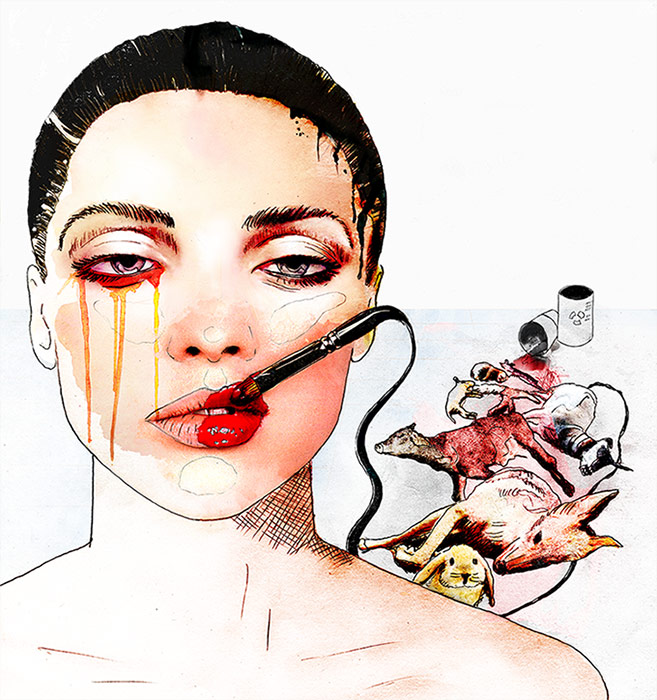What the post-pandemic beauty boom looks like














What the post-pandemic beauty boom looks like
There’s no doubt that the personal care sector was one of the hardest hit during the Covid-19 pandemic, with loss of earnings, redundancies and increased competition from DIY treatments all having long-term effects on the beauty industry.
“Having suffered ravaging economic effects and limited government support during the pandemic, the beauty sector is only just getting back on its feet,” explains Lesley Blair MBE, CEO and chair of BABTAC (British Association of Beauty Therapy & Cosmetology). And it’s hardly plain sailing: now, of course, there’s the cost-of-living crisis to contend with, too. “Almost half of beauty businesses say they have recently been forced to cut other business costs, including wages or reducing opening hours, to afford sky-high utility bills,” she adds.
But Blair confirms that despite these limitations – which the ‘not for profit’ BABTAC is continuing to fight against – the sector is successfully adapting and evolving in myriad ways. “We're seeing rising demand, particularly in wellbeing and skincare treatments, an increase in beauty start-ups and unprecedented innovation,” Blair says. “Those businesses that can successfully capitalise on these opportunities are set for a booming period ahead, against a backdrop of greater public support and a newfound appreciation for the work we do."
This follows a staggering 7,083 new hairdressing and beauty treatment businesses launching at the height of the pandemic in 2020, likely as a result of people choosing to go self-employed or pursue their beauty 'side hustles'. “Therapists are creative by nature and during the Covid pandemic close contact services were forced to pivot and diversify their businesses,” Blair tells Bazaar. “Many salons and therapists who used to only sell products in-salon went online, while some even began making their own customised client home kits, with online skin consultations. Many continue to provide this service while some even started making their own products, remembering to follow the legal processes of decanting or producing new products.”
Now, according to a gov.uk blog,'beauty' appears in more business titles than any other word, which clearly speaks to the industry’s ever-growing demand.
One key area they're servicing is our skin, and Blair notes that following the trend for going makeup-free during lockdown, demand for all things skincare is ever increasing. According to Kline’s consulting and market research, data analysts are expecting consumer spending on in-clinic aesthetic treatments to rocket by almost 25 per cent throughout 2022, with advanced technology and equipment becoming more affordable and accessible to both salons and mobile therapists, and importantly catering to a wider diversity of skin types. “Consumers are looking for immediate results from their therapies, and also want customised packages that can combine aspects of holistic treatments with more advanced aesthetics to promote overall wellbeing as well as results-driven skincare,” Blair tells us.
Blair says she’s most excited by the research and development in tech enabling therapists to make detailed assessments of skin conditions and provide instant solutions like never before. “From the accurate skin scanners that we’re seeing on the high street, to the full skin analysis machines featuring learning algorithms to provide an even more in-depth analysis of skin type or ageing, service providers are now able to offer highly targeted and customised treatments, as well as highlight potential contra indications or skin irregularities.” Some machines now can even predict skin conditions for three-to-five years in the future, she says, thanks to the use of artificial intelligence (AI). “This allows therapists to not only provide immediate results-driven treatments, but also work up fully customised long-term skin treatment programs for their clients.”
It's no wonder forecasters have named the 'facial and skincare salon' segment as a particular area of predicted growth between now and 2030. The pandemic might have had dire economic effects overall, but beauty is bouncing back with the potential to boom like never before.
Reference: Harper's Bazaar: Bridget March
Articles-Latest
- 8 common mistakes that could be making your dry lips worse
- Dermatologist's insight on shower frequency without harming skin
- ‘Making Black More Beautiful’: Black Women and the Cosmetics Industry in the Post-Civil Rights Era
- A damaged skin barrier can leave you dry, itchy or oily. So, how do you fix it?
- What is collagen and why is it so popular in the beauty industry?
- Skin icing's not just for summer – this cryotherapy technique will get you party season ready
- How much sunscreen should you use and how often do you need to apply it?
- Are AHAs Safe?
- EXFOLIANTS - Cosmetics Unmasked
- ASTHMA - Toxic Beauty
- PHOTOSENSITIVITY - Toxic Beauty
- How to Tighten Your Loose Skin After Weight Loss
- Everything You Need To Know Before Getting A Septum Piercing
- What you should know about treating rosacea in darker skin tones
- Shampoos and Conditioners Designed to Soothe Dry, Itchy Scalps
- 3 things an expert wants you to know before getting filler
- Dissolving filler: everything you need to know
- How thread lifts differ to facelifts – and filler injections
- People are using face tape to minimise wrinkles, but does it work? After asking a plastic surgeon, I tried it for myself
- Reality of Black beauty influencing - making foundation with eyeshadow and unequal pay
Cosmetic ingredients
LOGIN
Who's On Line
We have 6 guests and no members online
Articles-Most Read
- Home
- Leucidal
- White Bees Wax
- Cosmetic Preservatives A-Z
- Caprylyl Glycol
- Cosmetics Unmasked - How Safe Are Colorants?
- Cosmetics Unmasked - Choosing Ingredients
- Cosmetics Unmasked - Colorants And Fragrances
- EcoSilk
- Toxic Beauty - Who's Looking At Cosmetics?
- Cosmetics Unmasked - Fragrances
- Microbes and Cosmetics
- Chemicals Lingering In The Environment
- Microbes and Safety Standards
- Toxic Beauty - Hazardous To Your Health
- Potassium Sorbate
- Yellow Bees Wax
- Synthetics In Cosmetics - The Industry Fights Back
- Fresh Goat's Milk Soap
- Active Ingredients
- What's Happening in the USA - Cosmetic Regulations - Toxic Beauty
- Cosmetics Unmasked - Listing Cosmetics
- Natural Waxes A-Z
- Toxic Beauty - Cocktails and Low Doses
- Natural Butters A-Z




